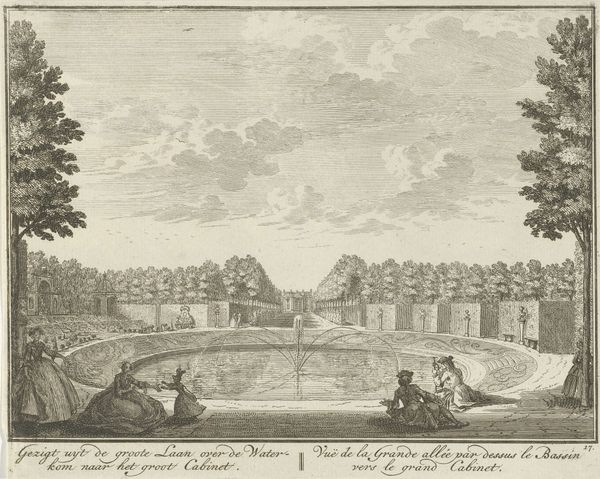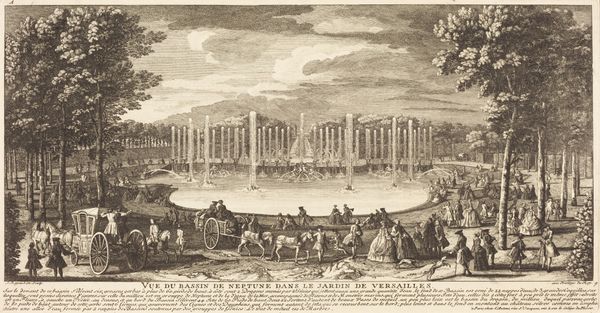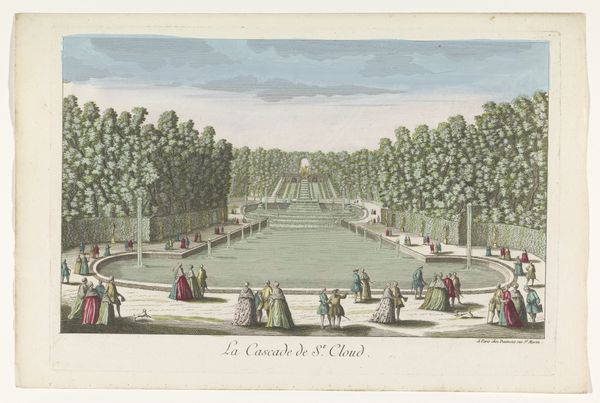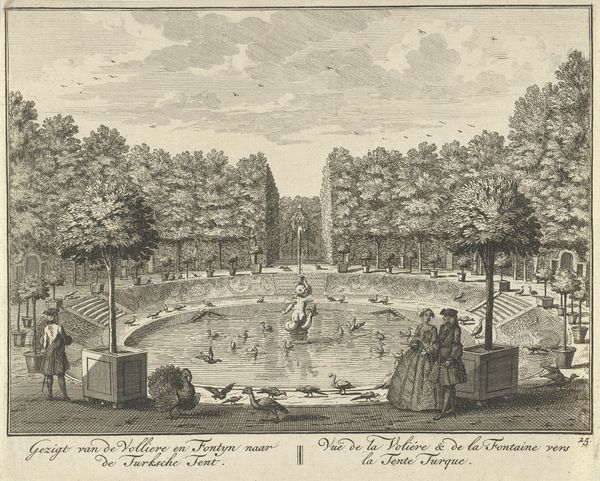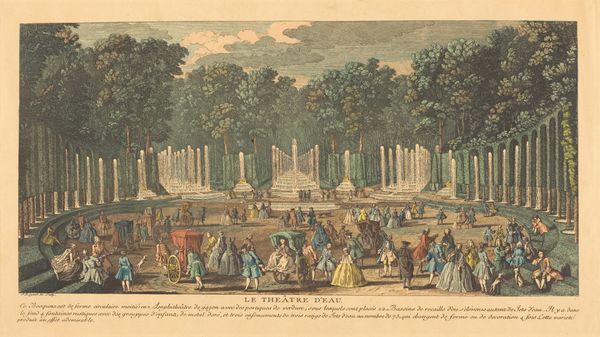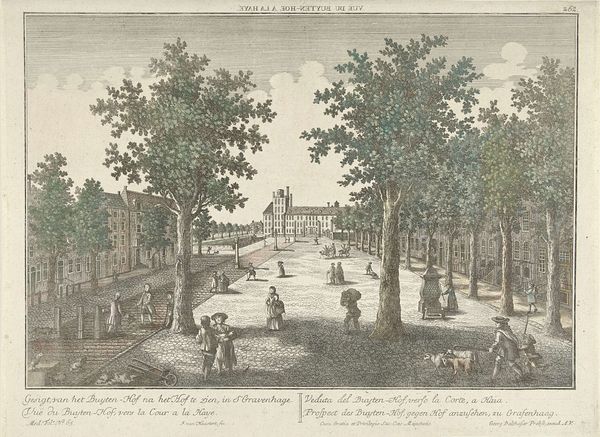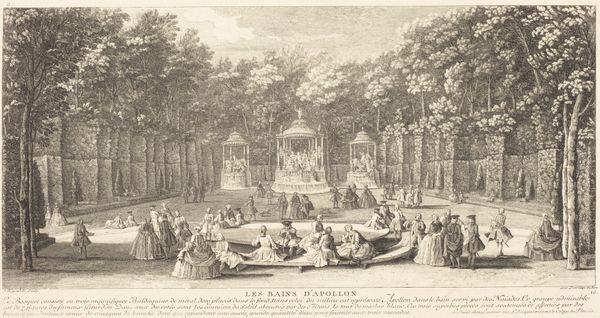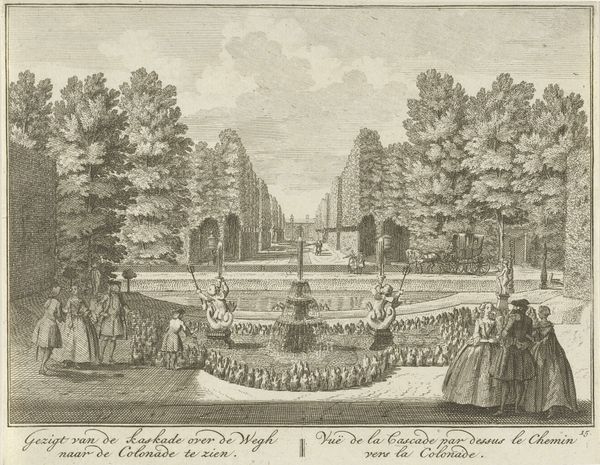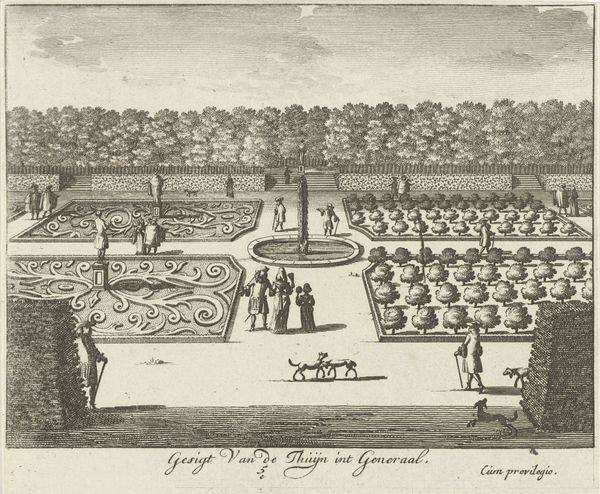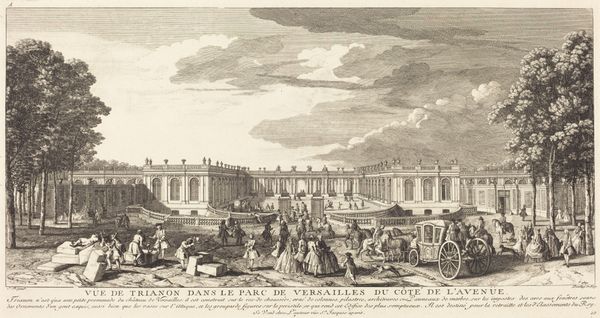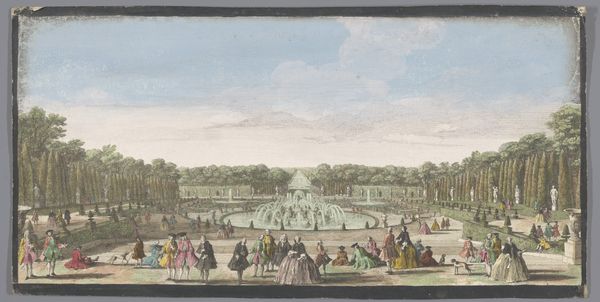
#
quirky sketch
#
mechanical pen drawing
# print
#
pen sketch
#
pencil sketch
#
old engraving style
#
personal sketchbook
#
sketchwork
#
pen-ink sketch
#
pen work
#
pencil work
Copyright: National Gallery of Art: CC0 1.0
Curator: This is "L'Isle Royalle," a print by Jean-Baptiste Rigaud. The image presents a formal garden, quite possibly near a palace, populated with figures in period dress enjoying the space. Editor: It has such a staged, almost theatrical quality. Everyone is carefully arranged, like players on a set. The sharp lines and details, it’s all quite striking. Curator: The artist employs an old engraving style. It gives the work a crisp precision, almost like a technical drawing. The fine lines and intricate detail remind one of botanical illustrations or architectural plans from the same era. Editor: Precisely! It lends a certain weight and formality, doesn't it? It’s as if the artist is cataloging not just a place, but a particular social order, a very structured way of engaging with nature. The lines all serve a narrative. Curator: I agree. Notice the meticulous depiction of the figures and their clothing. Every fold, every button is carefully rendered, speaking volumes about status, hierarchy, and the politics of appearance. There's an interesting dance between nature and culture being depicted. Editor: I see the psychological undercurrent too. It seems like this organized space imposes its own type of control onto those who inhabit it. Do you see any reflection of that tension or confinement as part of court life? Curator: I'm inclined to agree. While ostensibly a scene of leisure, "L'Isle Royalle" conveys the constraints of its era and the very public performance of private life at court. The work really encourages a close look, both technically and sociologically. Editor: It offers us a glimpse, really, into the aesthetics of power and its display, not just the literal arrangement of garden and fountains, but how this visual grammar impacts how the elites thought of themselves. Curator: Indeed. Considering it altogether, "L'Isle Royalle" is not merely a pretty picture of the past but a potent symbol of its structures. Editor: Precisely, structures that reveal something that still persists. The arrangement is not only historical; it’s archetypal.
Comments
No comments
Be the first to comment and join the conversation on the ultimate creative platform.

